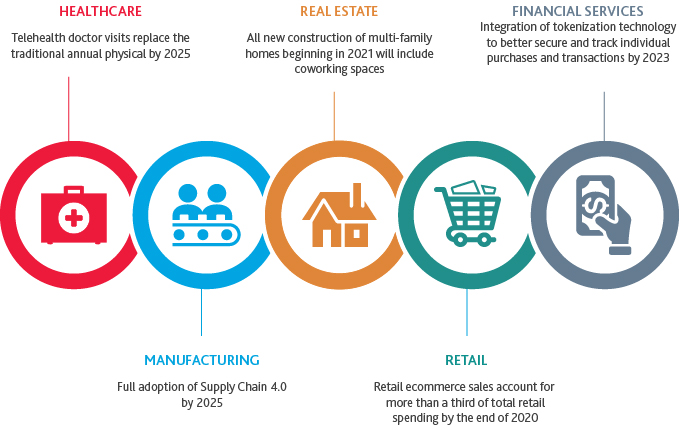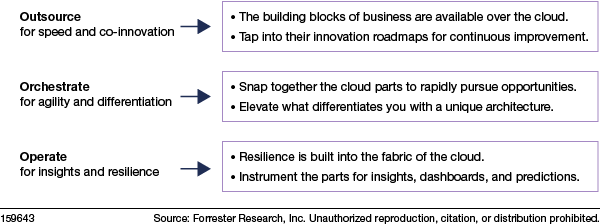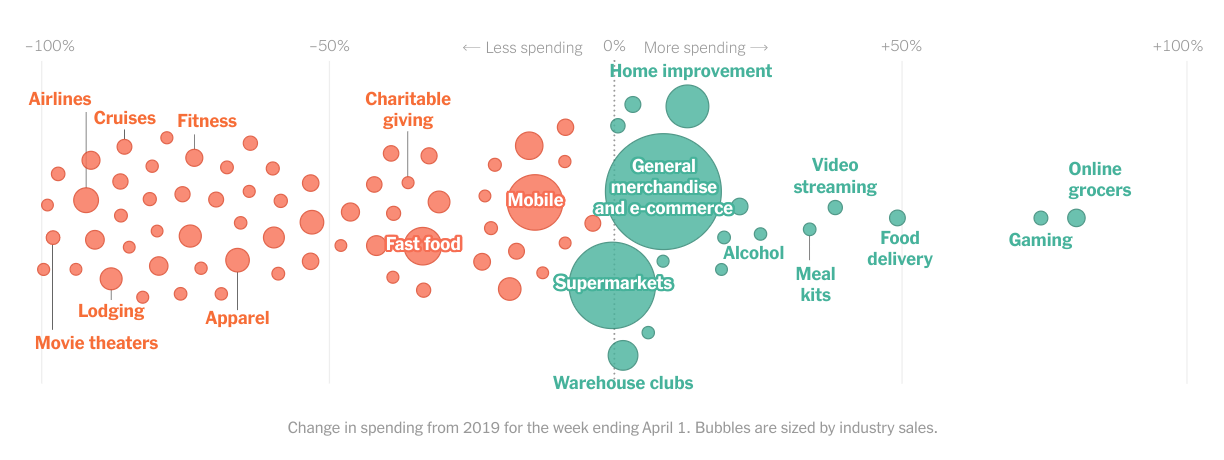Digital Transformations: the COVID-19 crisis is speeding up the need for business to compete in the digital economy
As we have now lived for almost close to 4 months into this Covid-19 health pandemic if people had any doubts about the need to invest in cloud, AI, analytics technologies and tools to digitally transform to ensure the relevance and longevity of the business. Even as cities and businesses are slowly starting to reopen in different phases much of the world is still working in limited contact capacity, where a majority of interactions with customers and employees must take place virtually or at a distance. With rare exceptions to some “essential retail businesses” allowing some customers inside, operating digitally is the only way to stay in business through mandated shutdowns and restricted activity. It’s go digital, or go dark. Now Silicon Valley has been disrupting industries and forcing legacy companies to either digitally transform or get left behind. Mckinsey recented published an interesting article titled “The digital led recovery from Covid-19” of which they say
“We have not seen the end of the crisis. Nor do we know exactly when the recovery will come. But it will come, and the CEOs who can best prepare their businesses effectively for a more digital future will give their companies the best chance for a brighter future.”
As a recent Forrester article titled “The pandemic recession demands a digital response” states that “digital transformation was never optional. But most firms treated it that way, applying digital technology in dribs and drabs — until COVID-19 shuttered economies and forever altered the patterns of life and work and commerce. That is, until uncertainty and volatility became the new normal. Companies leapt into adaptive mode. And they seized digital to do it.” And as I mentioned this move to digitizing processes and services is not new but it has been starkly brought into focus.
Before the pandemic hit, a paradigm shift towards digitization and servitization of the economy was already happening albeit at a slower pace. But as a BDO article points out that the “current events have accelerated the paradigm, as evidenced by the marked shift in spending towards digital businesses.” In a NYT’s article titled “How the virus transformed the way americans spend their money” highlights these consumer spending habits changes in a graph chart.
(image credit:NYT)
CNBC recently reported that Mary Meeker of Bond Capital published a 29-page CoronaVirus trends report on how the coronavirus is shaping economic activity, consumer behavior and technology. CNBC reporter Ari Levy noted that “businesses that are doing the best in the current crisis use cloud technologies, sell products that are always needed, can easily be found online, make other businesses more efficient and have a good social media presence.”
Covid-19 has upended our modern lives in ways we’re just starting to understand and some of these changes could be just temporary or adopted for the future!
Basically what this pandemic has done is to become a reality check for companies that have been slow to invest or embrace digitizing parts of business, whether it is services, cloud processes or eCommerce capabilities etc, they are finding themselves were under prepared to deal with this order online curbside pickup as an example. On top of the health risks of your employees, the sudden drop in consumer demand for many non essential items and services and economic uncertainty, is making the non-digital companies in a rush to migrate their operations and teams to a virtual environment. And while Mark Zuckerberg coined the phrase “move fast and break things” when it comes to digital innovation, moving fast and frantically can sometimes lead to making mistakes.
On the flip side to that coin, the companies that were leaders in developing strategies to invest in digital and innovative technologies and had already been executing them prior to the pandemic are now in an even better position to steal market share from their less nimble competitors. Meaning The businesses who were already well along the offline-to-online transition are faring best. But let’s not pretend that these unprecedented COVID-19-related challenges they now face are not hard, regardless of how far along they are in the digital maturity curve. But the more digitally mature organizations have significantly more tools at their disposal to not only weather the storm, but to come out the other side stronger for it. As the forrester article states “now, in this moment of clarity, boardrooms and leadership teams realize what a blessing cloud and services partners have been to their ability to serve customers and keep remote workers productive and safe, despite unimagined disruptions.” We also should completely write off the digital laggards just yet, because times of crisis and and downturn cycles in the past have spawned new ideas, innovation and ingenuity, could any business to a breakout performance. Basically companies that sit back and rest on their existing digital capabilities can be surpassed by those that invest in adapting their digital capabilities for the post-coronavirus future—a future that looks very different from the world pre-pandemic.
As a business owner you must also realize change and adaptability is the path forward. Don’t lose this opportunity to transform, to lay the foundations for a return to growth. So to highlight some of the advantages that more digitally mature companies have the BDO article points out a few key areas:
Efficiency advantage: They harness digital technologies to streamline operations and automate manual processes—resulting in greater speed, less waste and more focus on revenue-generating activities
Productivity advantage: Their employees were already set up to work remotely, so their focus is on leveraging collaboration technology and tools to maximize workforce productivity and sustain company culture.
Security advantage: They are better prepared for and more resilient to the proliferation of cyber threats in the current environment.
Customer advantage: They mine customer data to monitor for shifts in demand and uncover emerging customer needs.
Agility advantage: They leverage data-driven insight to make decisions faster and act on them faster. They have built-in cultural flexibility to adapt or change course at any point.
Now Forester suggests a few ways that companies can approach an agile path forward to innovation. Saying that firms could:
- Focus on their core capabilities and smartly outsource other capabilities to partners that are motivated to continuously improve them to win and keep your business.
- Scale up agile planning and execution in every facet of their business to be more adaptive to demand and more resilient to threats by orchestrating the resources of the ecosystem.
This means changing the way you do things. This post Covid-19 era has pushed a new reliance on digital solutions. Now in this new reality of a Covid-19 world, social distancing is currently the most effective way to slow the spread of the virus until a vaccine can be found to protect the population. And unfortunately, as we are seeing with states trying to open and tracking backwards after new spikes in cases, anything that is reliant on human-to-human contact–which is basically most aspects of our lives–for now must continue to be altered to account for the dangers of the virus.
The digitization of offline to online has stepped in to bridge the gaps left by government forced shutdowns and social distancing measures. Without the advances in digital tools and technologies, we would have a much harder time trying to work, shop, go to school, and more in the current environment or when Covid 19 is not an issue anymore. Of course there are some caveats to this such restaurants are allowing outdoor dining, you can enter some businesses now if you wear a mask, and services such as construction or landscaping are happening etc.
The BDO article laid out some useful points on the areas that digital technologies are being utilized by people and businesses to continue to function during the pandemic:
- Remote Working from home: Before the pandemic, only 30% of U.S. employees worked remotely 100% of the time, according to Owl Labs. For the other 70%–including the 38% of the total U.S. workforce that only worked on-site—the transition to working remote full-time has been a shock to the system—figuratively, and in some cases, quite literally, when user demand has exceeded system bandwidth. But the silver lining is that with such a high percentage of the working population now remote, digital collaboration is improving in leaps and bounds, both in terms of the sophistication of the tools to facilitate it and workers’ level of comfort with it.
- Omnichannel Commerce: As many physical business locations are shut down, consumers are turning to online shopping to meet their needs, even those who had historically been reluctant to do so. In particular, grocery delivery services, such as Instacart, have been in high demand. Consumers can choose their groceries, pay online, and leave feedback all on one convenient app. Businesses are blending the physical and the digital to provide for their customers through delivery methods such as curbside pickup and contact-less delivery. Physical-digital integration is more important now than ever before.
- Digital Content Consumption: Quarantined working from home consumers are turning to digital content providers to meet their entertainment needs. 51% of internet users worldwide are watching more shows on streaming services due to the coronavirus, according to data from Statista. Netflix alone saw 16 million new signups for its service in the first three months of 2020. Meanwhile, many film studios have been pushing new releases to streaming services early to captive audiences.
- Platformification: Institutions and organizations of all types are trying out digital platforms to stay above water during the pandemic. The fitness industry has shifted to holding virtual classes on streaming services, both live and pre-recorded. Almost every school, from elementary schools through graduate programs, have shifted to online courses. Large-scale conferences and events are being held virtually. The NYSE has moved entirely to online trading. While some businesses will revert to their traditional models when the crisis abates, others may opt for a hybrid approach as they recognize the benefits of recurring revenues.
- Digital Health Solutions: Much of America’s healthcare system has started to go more digital to take some of the strain imposed by the coronavirus on society and the hospitals. Telemedicine and remote diagnostics are gaining more user adoption and are starting to help patients get medical advice and diagnoses at home so they don’t need to come in to the doctor’s office or hospital, and 3D printing is being used to expedite the production of critical medical supplies, such as PPE. In the absence of a vaccine or proven treatment, the best preventative medicine is information-sharing. Digital contact tracing has already been used to effectively slow the spread of COVID-19 in East Asia. The technology itself is at least a decade old but has struggled to gain traction in the Western world where views on privacy are still a concern and hot button topic. Whether American citizens (and those that govern them) will be willing to trade individual privacy rights for the greater public good remains to be seen, but there may be more leniency around data collection going forward.
The pandemic serves as a widespread test case for the effectiveness of these digital solutions
And some of these new digital tech adoption trends may continue after the pandemic and become permanent fixtures and lead to some long-term consumer and business behavioral changes such as working remote part-time as an example.

(image credit: BDO)
Making a Case for Digital Transformation in a Crisis
Now even though for the 2nd straight month a more positive jobs report came out with the US adding nearly 5 million jobs in June, the economy is still in a downturn (recession) which could outlast the current wave of the pandemic. And some companies might thinking about cutting back on expenses and investments which could include any digital transformation projects ,
A smart cost reduction program focuses on trimming the fat without cutting away the essential parts of the business that are necessary to sustain current levels of business performance.
The BDO article states that If we take the analogy as” viewing an organization as a living organism, digital transformation powers the backbone, muscle, brain and heart of the organization. Halting digital innovation efforts in crisis will significantly compromise overall business health.”
Now it may seem contradictory, that during a time of crisis to double down on digital transformation. Rather than putting digital transformation plans on hold, many organizations should and need to go all in.
The cost of investment shouldn’t be beyond what the balance sheet of a company can afford. Many businesses are understandably cautious to open the purse strings in the current uncertain environment. And while it is true that many times going through digital transformation initiatives can be viewed as a massive upfront investment in long-term results, it doesn’t have to be. Some of the most successful transformation projects start with low-cost proof of concept (POC) pilot projects and limited resources that are scaled up once the kinks are worked out and the business results are proven. Done in the right way, digital transformation can be self-sustaining, with each incremental improvements’ or wins that pay for the next phase of the journey.
According to the BDO article – you can actually save money. Stating that “past recessions show that controlling costs by improving operational efficiency—a task for which digital solutions are perfectly suited—is more effective in sustaining businesses through financial turbulence than traditional cost-cutting measures alone.” As an example, companies that rely primarily on workforce cuts to manage costs only have an 11% chance of “breakaway performance” coming out of a downturn, whereas companies that focus on operational efficiencies over layoffs are more likely to experience breakaway performance, according to a HBR article titled Roaring out of a recession.
So one of the bets that could increase efficiency is automation projects, where the ROI can be seen almost instantly. Which could end up paying for the upfront investment costs.

(image credit:IBM)
One example of this could be RPA or robotic process automation which can enable companies to automate certain types of work processes to reduce the time spent on costly manual tasks and reallocate resources elsewhere. The economics of automation are pretty straightforward: the same work is performed faster and with fewer mistakes, while human capital resources can be redeployed to higher-value tasks or to fill critical gaps. While more complex machine learning (ML) tools can be used to identify and address unforeseen areas of waste.
Here is the thing, especially in a time of crisis, sometimes reinventing business models is a necessity for survival of an organization.Many companies are experiencing devastating financial strains as result of the pandemic:
- whether because of supply chain impacts
- forced shutdowns
- a significant pullback in consumer spending
- or all of the above
Consumer discretionary manufacturers, hospitality, retailers, travel, oil and gas companies, and some service industries are among the sectors that have been hit the hardest. To avoid deathly revenue losses, these companies have no choice but to shift focus to their business’s existing digital channels or to make a bigger pivot to a digital business model. With everything that happens in life you can find some silver linings: Innovation or business model pivots that are made out of necessity could become lasting pillars of the business that help it to thrive well beyond the pandemic.
There may not be a “return to normal” anytime soon
This Covid-19 and post Covid-19 era may reshape societal norms of the way people both work, consume things and live. And of course some of these new adopted behaviors were either developed or accelerated in crisis – including some of the wide-scale digital adoption usage—may actually outlast the pandemic, well after restrictions on activity are lifted. To stay competitive, organizations must respond to these new societal and consumer behavioral changes and meet emerging customer demands. Forward thinking companies will focus now on leveraging advanced analytics to extract insights from their customer data and continue internal and external data integration efforts to develop a more holistic view. Detecting those signals of change early will be crucial to optimizing the customer experience and redefining customer value propositions in line with evolving preferences and needs.
COVID-19 Trends That Maybe Here to Stay
- Remote Work Arrangements
- Digitization of Customer Service
- Shift to e-Commerce
- Greater Use of Self-Service
- Contact-less Delivery Options
- Outsourced IT
- Customers Focusing on Spending Less and Saving More
- Increased Focus on Safety, Cleanliness and Health
- Bulk-Buying and Stockpiling
- Use of Online and On-Demand Platforms
(image credit:BDO)
Here is a few things that companies can do
Innovation through ecosystems is what to do. This is the opposite of “not invented here.” This lean approach instead prods every company to ask, “What’s the least we can do ourselves and the most we can get out of partners?” A newly focused firm outsources for speed and innovation, orchestrates cloud resources for agility and differentiation, and operates for resilience and insights. Forrester gives a helpful graph that shows what it looks like:

(image credit:Forrester)
Your company’s digital ecosystem is an ever-expanding source of innovation and value. Firms are a click away from a massive set of raw materials — hardware, software, industry, and business services — to build and operate their business. At the same time, services providers have been building deeper cloud skills and orchestration capabilities. These resources come together into a digital ecosystem with clearer value alignment than in traditional supplier relationships.
Agile at scale is how to do it. organizations have been incredibly agile in these last months. Apply that everywhere. Firms committed to co-innovation agility bring agile planning and execution into every facet and edge of their organization. They assemble squads of employees from different departments, incorporate partners’ resources, and operate as a multidisciplinary team. They adopt a transformation process to continuously set outcomes, move fast, measure impact, and fix mistakes while they’re still small. Here’s what that looks like:

(image credit:Forrester)
This works best when there is a clear value alignment internally and externally. Internally, by putting customer and employee outcomes at the center of any transformation, firms can align their business, operations, and IT departments. They can build contracts with cloud and services partners that reward results, not just resources and time. A value-aligned digital ecosystem will result in a dramatically accelerated co-innovation process because every player is working toward a common purpose.
Conclusion
Covid-19 has sped the need for companies to digitally transform parts of their businesses to adjust to technology trends that are merging offline and online commerce behaviors. But this will be considering that available resources —both in terms of talent and money—will likely be constrained. Digital initiatives may need to be re-prioritized based on relevance in the current environment. New problems and opportunities may come to light with greater urgency. For some businesses, the forces of disruption may be so great that the long-term strategic vision will need to be overhauled. And any digital transformation roadmap that does not deliver value at every increment will need to be re-imagined. The key is continuing to experiment and innovate with digital solutions front and center. You don’t have to do this all in-house to build innovative capabilities and technology solutions. By partnering with technology platforms and technology consultants, they can help you to co-innovate. With the right approach, companies can come out of the fray stronger, more agile, and more customer-centric than before.











